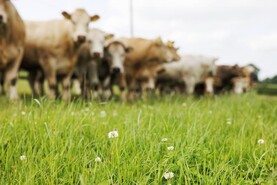Vaccinating badgers against bovine TB is “practically achievable” and could be effective in populations recovering from a cull, a new research study has concluded.
Reported in the journal People and Nature and involving researchers from the Zoological Society of London and Imperial College London, working alongside the Cornwall Wildlife Trust, the study was conducted over four years from 2019 in mid-Cornwall.
The work involved vaccinating badgers trapped in cages, with 16% of those sampled for TB testing positive in the first year, falling to zero by the fourth year of the study. The results should be treated with some caution, as the numbers involved were low. Vaccination took place on 16 holdings covering 13.3km2 in the first year, falling to 10.5km2 thereafter. In total, 265 badgers were vaccinated. There was no unvaccinated control group to act as a comparison.
However, the researchers point out that despite only trapping badgers for two consecutive nights each year, they vaccinated more badgers per km2 in the first year (5.6) than were removed in a surrounding cull zone (2.9). They also report that 40% of trapped badgers were cubs, suggesting this high rate could be linked to the nearby cull zone, with adults moving out to re-occupy the cull area. Given that cubs are less likely to be infected with TB, they are more likely to be protected by vaccination, so this may have facilitated disease control within the study.
“Although speculative, this suggestion raises the possibility that vaccination might be especially effective in badger populations recovering from prior culling, where high proportions of cubs would also be expected,” note the study authors.






 This is a subscriber-only article
This is a subscriber-only article










SHARING OPTIONS: